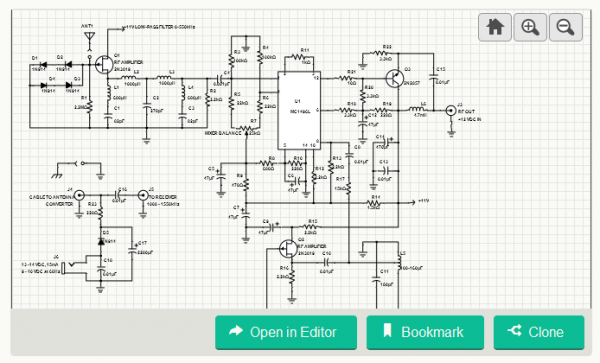Among the signals below 550 kHz are maritime mobile, distress, radio beacons, aircraft weather, European Longwave-AM broadcast, and point-to-point communications. The low-frequency converter converts the 10 to 500 kHz LW range to a 1010 to 1550 kHz MW range, by adding 1000 kHz to all received signals. Radio calibration is unnecessary because signals are received at the AM-radio’s dial setting, plus 1 MHz; a 100-kHz signal is received at 1100 kHz, a 335-kHz signal at 1335 kHz, etc. The low-frequency signals are fed to U1, a doubly-balanced mixer.
Transistors Q2 and associated circuitry form a Hartley 1000-kHz local oscillator, which is coupled from Q2’s drain, through C8, to U1 pin 8. Signals in the 10 – 550 kHz range are converted to 1010 – 1550 kHz. The mixer heterodynes the incoming low-frequency signal and local-oscillator signal. Transistor Q3 reduces U1’s high-output impedance to about 100 Ω to match most receiver inputs. Capacitor C15 couples the 1010 – 1550 kHz frequencies from Q3’s emitter to output jack J3, while blocking any dc bias.
Inductor L6 couples the dc voltage that’s carried in the rf signal cable from the receiver/dc adaptor. The dc voltage and rf signals don’t interfere with one another; that saves running a separate power-supply wire, which simplifies installation at a remote location. Capacitors C14 and C13 provide dc supply filtering.
For more detail: Low-Frequency Converter

